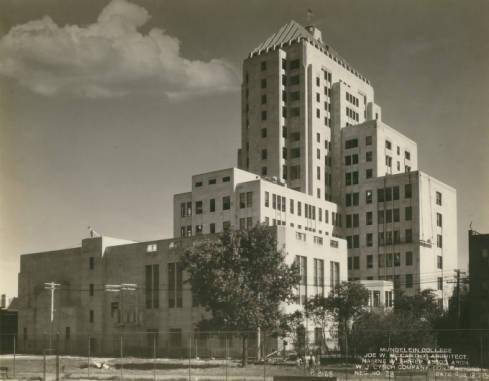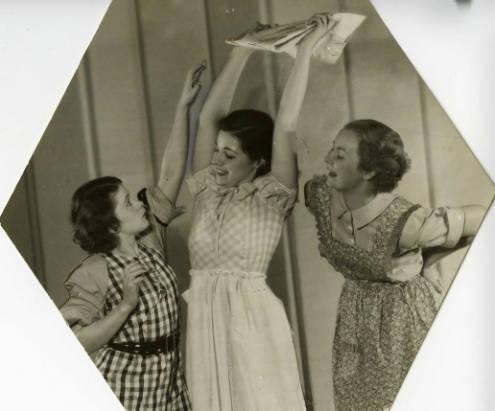1929: Mundelein College's Founding
At the curve of the always busy Sheridan Road lies Loyola’s Mundelein Center for Fine and Performing Arts. Though the Mundelein Center skyscraper is now an integral part of Loyola University’s Lake Shore Campus, it was once the home to Mundelein College; a school created by and for women. The college was founded by the Sisters of Charity of the Blessed Virgin Mary (BVMs) in 1929, and construction began just three days after the stock market crash that marked the beginning of the Great Depression. Funding for the college came to around $2 million, which was a staggering price tag made even more unattainable by the deepening depression. Yet miraculously, within one year of its founding, Mundelein College opened its doors for classes. When the college held its first commencement a few years later, it proudly graduated 384 students. From that first commencement in June 1931 until it joined Loyola in 1991, Mundelein College empowered generations of women through its mission of providing a strong Catholic liberal arts education.
In reaction to the many all-male universities across the country, the founding of women’s Catholic colleges was on the rise throughout the early 20th century. The Sisters of Charity of the Blessed Virgin Mary felt the need to expand their educational mission, but traditional church law stated that women could not study at Catholic schools run by and for men. The BVMs, however, were experiencing an overflow of applicants at the BVM academy, Mt. St. Joseph in Dubuque, Iowa, and so recognized the need for new schools.
With a great desire to build an institution specifically run by women, the BVMs had set their sights on the Rogers Park area of Chicago, a growing community that Loyola University had moved into a few years prior to Mundelein’s inception. However, accomplishing the goal would prove troublesome; between 1903 and 1920, three attempts were made to create a college for aspiring women but failed. The shared vision of educating women religious in the Chicago area fueled a partnership between Mother Mary Isabella Kane and the newly appointed Cardinal George Mundelein. This partnership proved incredibly successful, as it was the combination of their tenacity and passion that eventually led to the building of Mundelein College.
While Mundelein College began as a way for the BVMs to educate the next generation of women religious, it also extended opportunities for an education to women who would not necessarily become sisters of the order. Regardless of the career path its students took, the mission of the college remained consistent: to offer students a comprehensive Catholic liberal arts education. With support from the BVM faculty, Mundelein’s students were given the opportunity to exceed the societal expectations of women in the early part of the 20th century.
The education offered by Mundelein and other Catholic women’s colleges prepared young women, not only for a traditional future, but for a future where women were independent and respected. And while the association of women in the workforce is attributed to various factors, Mundelein and other institutions like it were a formidable force in imparting the skills and education these young women needed to sustain themselves throughout the many changes of the coming decades.
«1870: Loyola's Beginnings 1970: Loyola's Centennial Celebration»

